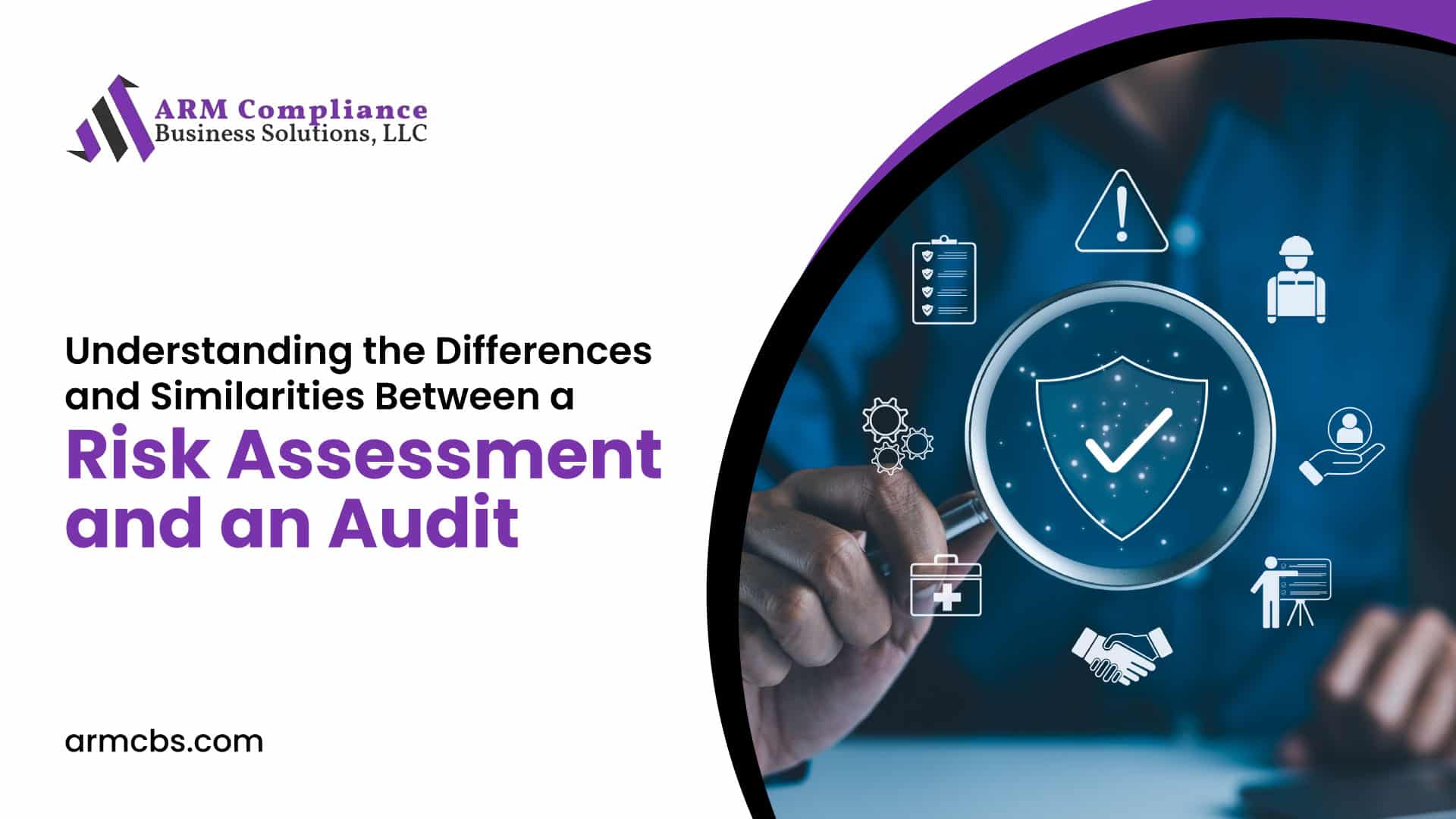Unfortunately, the terms Risk Assessment and Audit are often used interchangeably. Realistically, they serve distinct yet complementary purposes that oftentimes are required to navigate the receivables industry.
Risk Assessments and Audits both seek to protect organizations, but they do so from different angles. Risk Assessments are forward-looking, asking the question, “What should we be doing to prevent risks?” while Audits are retrospective, asking, “Are we doing what we say we’re doing?” Understanding their unique roles and how they interact can strengthen an organization’s ability to remain compliant and resilient.
Defining Risk Assessments and Audits
Risk Assessments focus on identifying potential risks that could harm the organization and the measures needed to mitigate them. The underlying purpose is to analyze the current landscape of operations and anticipate future challenges or threats. The guiding question here, and what every organization should ask themselves, is: “What should we be doing?”
An Audit, on the other hand, is the process of evaluating whether existing policies, procedures, and controls are being followed as intended. This process helps ensure that what was planned (and what should be done according to a Risk Assessment) is actually being implemented and adhered to in practice. The key question here is: “Are we doing what we say we’re doing?”
Both processes are key to building a strong compliance framework, but they take place at different stages of the compliance lifecycle. A Risk Assessment is proactive and anticipates problems before they occur, while an Audit is reactive and ensures that mitigation efforts are working effectively.
How to Properly Utilize a Risk Assessment
Risk Assessments are especially important in industries where regulatory oversight is strict, such as finance, healthcare, and data security. In the receivables industry, Risk Assessments often make or break the long-term health of an organization.
Risk Assessments typically follow a structured approach, starting with identifying compliance obligations and then evaluating how well the organization meets those obligations.
For example, the steps for initiating a Risk Assessment might look like this:
- Does a policy currently exist? If not, the organization must create one.
- Is the policy documented? It’s critical to maintain clear documentation of all policies so they can be easily referenced and updated as needed.
- Are employees trained on the policy? Training is essential for compliance; without it, policies are ineffective.
- Is the policy being followed? Here, it’s essential to prove that policies are more than just words on paper. A Compliance Management System (CMS) or external help can be valuable for organizations lacking internal resources to verify compliance.
- How often is the policy audited? This ensures the policy stays relevant and up to date.
Risk Assessments are dynamic and should be revisited regularly as new risks emerge. Fundamentally, a robust Risk Assessment can and should inform future audits by helping an organization pinpoint areas to review more carefully. Because of this symbiotic relationship, Risk Assessments are often taken as the final act of security, rather than the first step in a larger risk mitigation effort.
How Audits Improve Your Risk Strategy
We all know audits evaluate whether the policies and controls put in place are being adhered to and whether they effectively mitigate the risks they were designed to address. Unlike Risk Assessments, however, which identify potential risks, audits confirm whether the steps taken to mitigate those risks are working as intended.
Here are some key differences and similarities between the two processes:
- Timing: Risk Assessments are typically conducted before issues arise, while Audits occur after the fact to verify compliance.
- Scope: Risk Assessments focus on anticipating and mitigating potential risks, whereas Audits assess the effectiveness of current operations and controls.
- Outcome: The result of a Risk Assessment is usually a list of recommended actions to reduce vulnerabilities. The result of an Audit is typically a report identifying whether the organization is compliant with its own standards and regulatory requirements.
A well-conducted Risk Assessment can shape the scope of an Audit. For instance, if a Risk Assessment identifies data privacy as a significant concern, an Audit may focus on verifying that data handling policies are being strictly followed. In the real world, these audits are an ever-evolving part of the long-term health of an organization. If a Risk Assessment — which should also be conducted regularly — identifies a core problem to be solved, then your audits should ensure that the problem has been solved.
Additionally, audits can take several forms:
- Internal Audits: Conducted by the organization itself to verify compliance with internal standards.
- External Audits: Performed by third parties to ensure that the organization complies with industry regulations or legal requirements.
- Operational Audits: Focus on improving the efficiency of internal operations.
- Compliance Audits: Specifically designed to verify that the organization adheres to regulatory requirements.
Establishing a regular audit schedule helps organizations maintain compliance and ensure that nothing slips through the cracks.
Risk Assessments and Audits are two sides of the same coin when it comes to organizational risk management. A Risk Assessment is the first step, helping organizations identify and address potential vulnerabilities, while an Audit serves as a checkpoint to ensure that those mitigation strategies are being followed effectively. Together, these processes create a robust framework for ensuring compliance and managing risk. By understanding both their differences and similarities, organizations can take a more comprehensive approach to protecting themselves, ensuring they are not only prepared for future challenges but also meeting current regulatory standards.
Are you ready to ask yourself the tough question, “What should we be doing to prevent risks?” To stay ahead, explore how ARM Compliance Business Solutions’ tailored compliance risk assessments can strengthen your compliance strategy. Visit ARM Compliance Business Solutions, LLC online, or reach out to us at [email protected] to learn more and take the next step in protecting your organization.
About ARM Compliance Business Solutions, LLC
ARM Compliance Business Solutions (ARMcbs) is a woman-owned U.S. based consultancy that serves creditors, collection agencies, debt buyers, collection law firms, and receivables service providers.
The ARMcbs services are designed to provide organizations of all sizes the tools and skills to overcome their unique compliance and business risks related to consumer financial laws, bringing operational strategies and compliance processes together.





